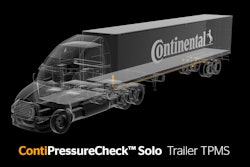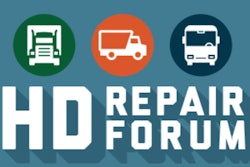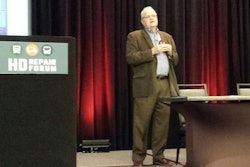The inaugural HD Repair Forum was held last week in Fort Worth, Texas – a collision repair conference focusing on the heavy-duty industry and geared (no pun intended) for repair shop owners and managers who cater to Class 5-8 vehicles.
Attendees who took a chance by spending time and money on the fledgling conference were treated to two full days of sessions that seemingly covered the full spectrum of the heavy-duty truck repair industry. Speakers and panelists addressed current and future truck technology, legislation, parts sourcing, wheel aligning and balancing, body work, insurance, human resources issues and much more.
Having had time to digest and write about the wealth of information for Truck Parts & Service, a theme stood out to me as it came up in several of the sessions: the continuing advancement of truck technology – and how it will affect the aftermarket parts and service industry.
Derek Kaufman, managing partner at Schwartz Advisors and CEO and founder of C3, spoke of the recent advancements he’s seen in the industry, including waste heat recovery systems and high-efficiency aftertreatment, which he says is the fastest growing service category in heavy-duty trucking.
Bill Kahn, principal engineer and manager of advanced concepts at Peterbilt Motors, mentioned torque overlay steering that’s designed to reduce driver fatigue and traffic jam assist, which will help with driver’s hours of service.
Jeff Sass, senior vice president, sales and marketing at Navistar, mentioned collision mitigation systems, which he says will be legislated to become standard equipment at some point.
Other vehicle advances were mentioned, but what’s important here is not just that the trucking industry is dynamic and constantly pushing the technological envelope. We all see that. But trucks with these new, or relatively new, components will need repairs and parts need to be available.
Heck, even if Craig Van Batenburg, ACDC CEO, is right and we do start seeing more electric trucks on the road in 10 years, he says shop layouts might be affected because the trucks’ multiple, large battery packs need to be set somewhere while vehicle repairs are being made.
The point is the aftermarket industry needs to be ready for the new breed of trucks.
Lauro Perez, Navistar procurement director, sees the challenge of supporting customers with collision mitigation systems, for example, who need to have these new components repaired or replaced. “We might not be selling a lot of bumpers, hoods and headlights, but how can we better support our customers now? Those systems are going to need replacements, [such as] sensors and cameras. It will be less collision parts.”
But it’s not like everyone will stop driving older trucks and start driving ones with all the latest advancements. This means not only do parts suppliers and technicians need to be ready now to diagnose and service vehicles with the latest technology, but they also will need to continue providing parts and service for the older trucks that will be on the road for a while.
According to Sass, there are nearly 4 million Class 8 trucks on the road today and when new technology is adopted, it will be 20 to 25 years before it fully takes over the truck population. “You, the repair industry, will be dealing with a wide variety of models and eras of technology for the next 20 years,” he says.
So, don’t stop stocking bumpers, hoods and headlights just yet.










